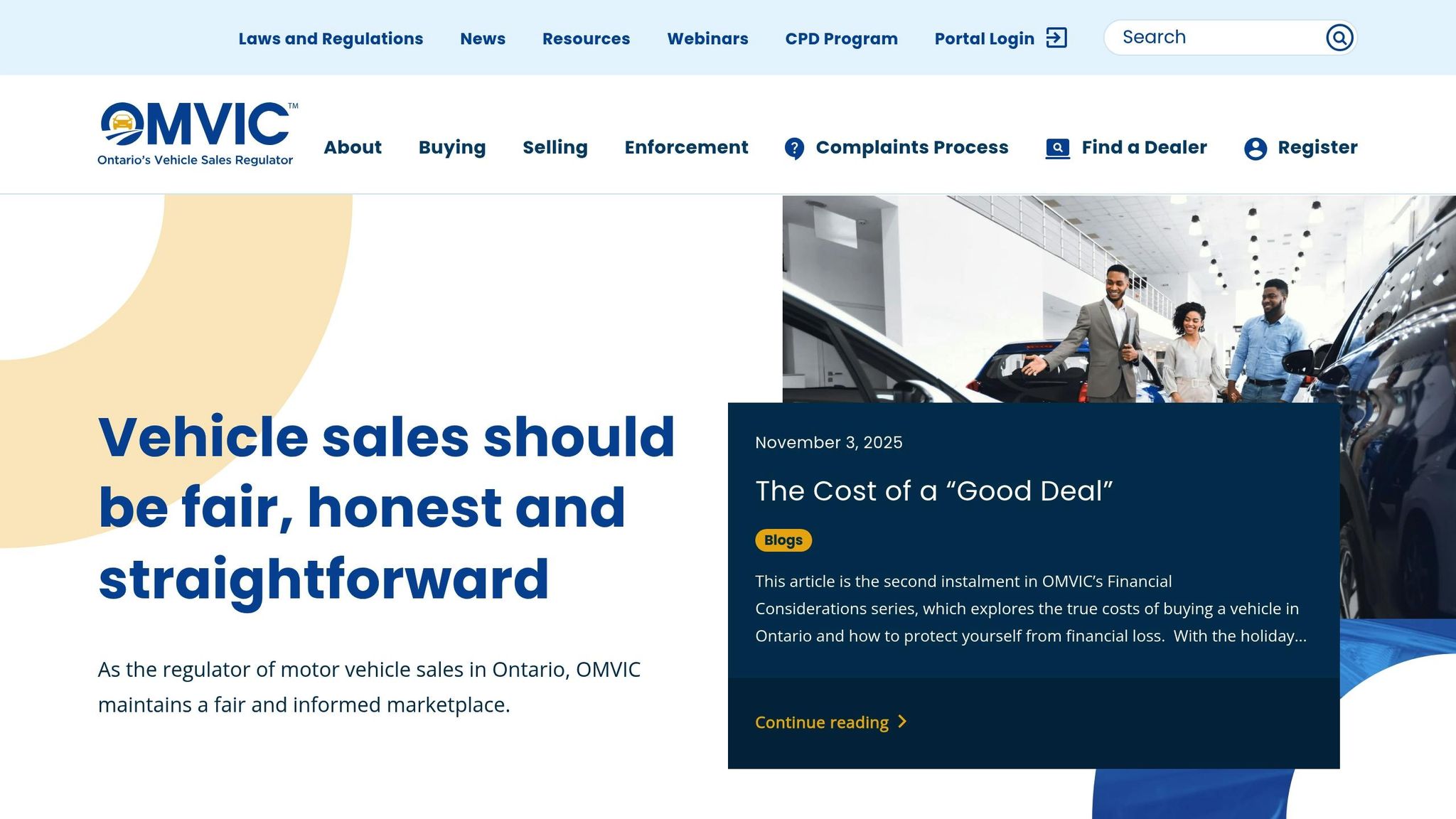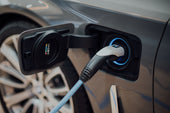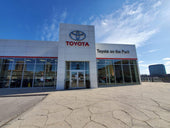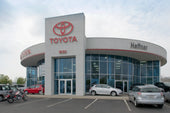When dealing with car dealership disputes in Canada, acting quickly and staying organized is crucial. Common issues include undisclosed vehicle damage, warranty disagreements, or misleading sales terms. To protect your rights and resolve problems effectively, follow these steps:
- Gather Evidence: Collect contracts, vehicle history reports, diagnostic findings, and photos of undisclosed damage.
- Contact the Dealership: Speak with management, document all interactions, and send a formal complaint letter if needed.
- File Complaints with Regulators: Reach out to your provincial body, like OMVIC in Ontario, for mediation or investigation.
- Consider Alternative Dispute Resolution (ADR): Use options like CAMVAP for manufacturer issues or mediation for dealer-related disputes.
- Legal Action: If necessary, pursue small claims court or hire a lawyer for complex cases.
- Compensation Funds: Apply for provincial funds if eligible, especially in cases of fraud or dealer bankruptcy.
Keep detailed records at every step to strengthen your case. Acting systematically improves your chances of resolving disputes and recovering any financial losses.
1 of 6 Quick Steps For Resolving A Dealership Customer Dispute, Complaint, & Problem - Introduction
Step 1: Collect Your Documents and Evidence
Building a strong case starts with thorough preparation. Step 1 of this checklist focuses on gathering the documents and evidence you need to support your claim. Provincial regulators like OMVIC require specific paperwork to process complaints efficiently, and being well-organized can help speed up the resolution process. Follow these steps to ensure you have everything in place for a solid claim.
Check Purchase Agreements and Contracts
Your purchase agreement and sales contract are the backbone of your case. These documents outline what the dealership committed to and what you agreed to, including details about warranties, return policies, repair responsibilities, and disclosures about previous accidents. Be sure to collect all relevant agreements, whether for purchase, financing, or leasing, as well as vehicle history reports, such as those from CARFAX, to identify any inconsistencies.
For instance, if your contract mentions a 90-day powertrain warranty but the dealership later insists the vehicle was sold "as is", this contradiction becomes a critical piece of evidence. Similarly, vehicle history reports can reveal undisclosed accidents. One Ontario consumer successfully resolved a dispute with OMVIC by presenting a CARFAX report, a mechanic's diagnostic findings, and copies of all correspondence with the dealership. This evidence allowed OMVIC to mediate a resolution between the parties. Once your contracts and reports are in order, move on to documenting the vehicle's condition.
Record Vehicle Problems and Condition
Take clear photos and videos of any damage that wasn’t disclosed at the time of purchase. Capture multiple angles under consistent lighting to ensure the evidence is detailed and undeniable. Scratches, dents, or other defects can be pivotal in proving your case.
For mechanical concerns, get a written diagnostic report from a certified mechanic. Reports that identify issues like engine problems or transmission failures will add weight to your claim. Keep all maintenance and repair receipts to show how the dealership's actions have affected you financially.
If the vehicle has recurring problems, create a timeline to track when each issue occurred. For example, documenting repeated stalling or ongoing system failures can help establish a pattern, which may strengthen your argument. Once you’ve documented the vehicle’s problems, the next step is to organize your communication records.
Save All Communication Records
Keep a detailed archive of all interactions with the dealership. Save emails, texts, and call logs, including timestamps and summaries. For important documents, consider using registered mail to ensure delivery. When it comes to phone calls, note the date, time, the name of the person you spoke with, and a summary of the conversation. Be sure to record any promises made, deadlines set, or solutions offered.
Organizing these records in chronological order will make it easier to present your case to regulators, during mediation, or in court. If you’re missing any documents, request copies from the dealership or other relevant parties, such as finance companies or mechanics. If some details are unavailable, reconstruct them to the best of your ability and be transparent about any gaps.
For those who purchased through platforms like Price Driven, transaction records and reports provided by the service can also be useful as supporting evidence. With all your documentation in hand, you’ll be ready to approach the dealership directly.
Step 2: Contact the Dealership Directly
Once you've organized all your documentation, the next step is to reach out to the dealership directly. This is a key part of resolving your issue and is often required before involving provincial regulators like OMVIC. Most dealerships prefer to handle complaints internally to avoid external scrutiny, so a professional and structured approach can often lead to a positive outcome.
Call Customer Service or Management
Contact the dealership during their business hours and aim to speak with someone who has the authority to address your issue. This could be customer service, a manager, or even the owner. These individuals are typically in a position to approve solutions.
When you connect with the right person, explain your situation clearly and concisely. Be sure to include important details such as the vehicle's specifics (like its VIN and model year) and reference the documentation you’ve prepared. For instance, you might say:
"I purchased a 2022 Honda Civic on October 15th, and within two weeks, it developed an undisclosed transmission fluid leak. This issue was confirmed by a mechanic's diagnostic report. I am requesting either a no-cost repair or a full refund of $28,500."
Make a note of the date, time, the name of the person you spoke with, and a summary of the conversation. If any commitments or timelines are mentioned, document those as well. If the person you’re speaking to can’t assist, politely ask to be transferred to someone with more authority.
Write a Formal Complaint Letter
If your phone call doesn’t resolve the issue, or if you want to create a clear paper trail, consider sending a formal complaint letter. Address the letter to the dealership’s owner or manager and send it via registered mail.
Keep the tone of your letter professional and stick to the facts. Start with a detailed account of the problem, including dates and the vehicle's VIN. Attach copies of relevant documents, such as your bill of sale, diagnostic reports, photos, and any prior correspondence. Clearly outline the resolution you’re seeking and include a reasonable deadline, such as 10 to 14 business days.
Here’s an example:
"On November 5th, 2025, the vehicle I purchased developed a transmission fluid leak, as documented in the attached service report. This issue was not disclosed at the time of sale. I am requesting that you repair the issue at no cost to me or provide a full refund of $28,500. Please respond by December 2nd, 2025."
Keep a copy of your letter and send it via registered mail or courier to ensure there’s an official record of your efforts to resolve the issue.
Follow Up on Responses
After reaching out - whether by phone or letter - allow the dealership a reasonable amount of time to respond. For phone calls, this might be 5 to 10 business days, while for formal letters, 10 to 14 business days is typical. If you don’t hear back within this timeframe, follow up with another call or letter, and document the date, time, and details of each follow-up.
When the dealership does respond, carefully evaluate their proposed solution. For example, if you requested a full refund but they offer to repair the vehicle and extend the warranty, consider whether this resolution adequately addresses your concerns. If you decide to decline their offer, explain in writing why it doesn’t meet your needs.
Keep detailed records of every interaction. This documentation can strengthen your case if you need to escalate the issue. At this stage, the goal is to give the dealership every reasonable chance to resolve the matter before taking further action with provincial regulators. If these efforts don’t work, you’ll be better prepared for the next steps.
Step 3: File Complaints with Provincial Regulators
Once you've gathered all your documentation from Steps 1 and 2, it's time to take your complaint to the appropriate provincial regulator. If your attempts to resolve the issue directly with the dealership have failed, escalating the matter to your province's regulatory authority is the next logical step. These regulators are equipped to investigate complaints, mediate disputes, and take action against dealers who break provincial laws. Start by familiarizing yourself with the complaint process for your local regulatory body, such as OMVIC if you're in Ontario.
Filing a Complaint with OMVIC (Ontario)

For Ontario residents, the Ontario Motor Vehicle Industry Council (OMVIC) is the go-to authority for handling complaints against registered dealers and salespeople. To begin, submit your formal complaint letter along with the supporting documents you prepared in Step 2.
When contacting OMVIC's Complaints & Inquiries Department, you'll also need to include the completed OMVIC Complaint Process Acknowledgement Form (OCPAF). Be sure to keep your original documents and only provide copies to OMVIC. Their goal is to resolve most complaints within 45 days.
OMVIC offers free assistance for common issues such as disputes over vehicle condition, contract terms, liquidated damages, and cases where dealers fail to disclose previous accidents.
Reaching Out to Other Provincial Regulators
If you're outside Ontario, similar steps apply with your province's designated regulatory body. In British Columbia, for instance, the Vehicle Sales Authority (VSA) handles complaints against registered dealers at no cost to consumers. You'll need to fill out a complaint form and provide supporting documents for the VSA to determine if your case falls under their jurisdiction.
In Alberta, complaints can be filed online with AMVIC. If you're not satisfied with their resolution, you can escalate the matter to the Alberta Ombudsman for further review.
What Provincial Regulators Can Do
It's important to understand the role and limitations of provincial regulators to set realistic expectations for your complaint. These authorities can:
- Mediate disputes between you and the dealer
- Issue written warnings to dealerships
- Require dealers to complete additional training
- Refer serious cases to disciplinary tribunals
However, regulators cannot enforce specific remedies, such as refunding your money or replacing a vehicle. Instead, their findings and actions can serve as valuable evidence if you choose to pursue legal action later on.
Regulators typically don't handle disputes involving private sellers or manufacturer defects. For manufacturer-related issues, CAMVAP (Canadian Motor Vehicle Arbitration Plan) may be a better resource. Additionally, they won't intervene in matters already before the courts or cases that lack sufficient evidence.
Compensation Funds and Other Outcomes
A notable advantage of filing a complaint with OMVIC or VSA is access to compensation funds. These programs can help eligible consumers recover losses if the dealer goes out of business or can't pay. However, applying for compensation requires meeting specific criteria and acting quickly.
While compensation isn't guaranteed, many cases are resolved voluntarily, as dealers often prefer to settle disputes rather than face disciplinary action. Typical outcomes include mediation, administrative warnings, mandatory training for the dealer, or referral to a disciplinary tribunal for serious violations. These steps not only address your complaint but also encourage better practices across the industry.
Step 4: Try Alternative Dispute Resolution
If direct negotiations with the dealership or regulatory complaints don’t resolve your issue, it might be time to consider alternative dispute resolution (ADR). ADR offers a quicker and more affordable way to settle disputes compared to going to court, often resulting in more amicable outcomes.
Use the Canadian Motor Vehicle Arbitration Program (CAMVAP)

The Canadian Motor Vehicle Arbitration Program (CAMVAP) is a national program designed to resolve disputes related to vehicle assembly defects, material issues, or warranty concerns. Best of all, it’s free for consumers and accessible across Canada.
CAMVAP handles hundreds of cases every year, with over 80% of disputes ending in a settlement or decision that avoids court involvement. Cases are typically resolved within a few months from the time the application is accepted to the final decision, making it a much faster option compared to traditional legal proceedings.
To qualify for CAMVAP, you must meet these criteria:
- Be a Canadian resident.
- Have purchased or leased a new or recent used vehicle from a participating manufacturer.
- Ensure your vehicle meets specific age and mileage limits.
- Your dispute must involve assembly defects, material issues, or warranty coverage.
Not all manufacturers participate in CAMVAP, so it’s important to check their website to confirm your vehicle’s eligibility before applying.
Here’s how the process works:
- Contact CAMVAP and submit your application.
- If your case qualifies, an independent arbitrator reviews evidence from both sides.
- The arbitrator issues a binding decision.
Depending on your situation, the arbitrator may order the manufacturer to:
- Repair your vehicle.
- Reimburse you for repair costs.
- Buy back your vehicle entirely.
These decisions carry the same legal weight as a court order, giving you a meaningful resolution without the costs and delays of a lawsuit. Keep in mind, however, that CAMVAP strictly deals with manufacturer-related issues, bridging the gap between dealership intervention and formal legal action.
Consider Mediation Services
If your dispute falls outside CAMVAP’s scope - like issues involving dealer conduct - mediation could be a helpful alternative. Mediation is a voluntary process where a neutral third party helps both sides communicate and negotiate a mutually acceptable solution.
Unlike arbitration, mediators don’t impose decisions. Instead, they guide discussions to help both parties understand each other’s perspectives. This collaborative approach is especially useful when maintaining a positive relationship is important or when creative solutions could benefit both sides.
Mediation is often faster and less expensive than court, and outcomes are reached through mutual agreement. In Canada, you can access mediation services through:
- Provincial regulators like OMVIC (Ontario), VSA (British Columbia), or AMVIC (Alberta).
- Online dispute resolution platforms or consumer protection agencies in some provinces.
Many of these services are free or available at a low cost, making them an accessible option. The informal nature of mediation also allows disputes to be resolved more efficiently compared to the formalities of court proceedings.
Before starting mediation, prepare thoroughly:
- Clearly outline your issue and the resolution you’re seeking.
- Gather and organize all relevant documentation and communication records.
This preparation will help ensure productive discussions and increase the likelihood of reaching an agreement that satisfies both parties.
| Method | Binding Decision? | Cost to Consumer | Typical Timeframe | Types of Disputes Covered |
|---|---|---|---|---|
| CAMVAP | Yes | Free | ~70 days | Vehicle assembly, defects, warranty |
| Mediation | Only if both parties agree | Free/Low-cost | Varies | Broader scope, including dealer conduct |
| Court | Yes | Filing fees + legal costs | Months to years | All legal disputes |
These ADR methods serve as practical steps to explore before considering legal action. If neither CAMVAP nor mediation resolves your issue, you can move on to the legal options outlined in the next step.
sbb-itb-20f5d75
Step 5: Take Legal Action When Needed
If alternative dispute resolution methods like CAMVAP or mediation don’t resolve the issue, legal action might be your only option. While it should be a last resort, sometimes it’s the necessary step to achieve a resolution. As with earlier steps, thorough documentation is critical. Many disputes with car dealerships can be addressed through small claims court, which is designed to handle everyday consumer issues.
File in Small Claims Court
Small claims court deals with cases involving smaller monetary amounts, though the maximum claim limit varies by province. Check your provincial guidelines to ensure your claim qualifies.
You can file your claim at your local courthouse or online. Be prepared to pay a filing fee, though fee waivers may be available if you can demonstrate financial hardship.
Before filing, review your documented timeline and communication records. Key pieces of evidence include your sales contract, related agreements, diagnostic reports, repair receipts, and communication logs. Any documentation related to the vehicle - such as receipts for repairs or maintenance - can strengthen your case. If misrepresentation is part of your claim, gather any advertisements, brochures, or written statements about the vehicle’s condition, history, or features.
Proof that you followed the required complaint procedures, such as registered mail receipts or courier tracking numbers, can also bolster your case.
In provinces like British Columbia, dealerships are legally required to provide specific written disclosures. These include odometer readings, damage history exceeding $2,000, out-of-province origin details, prior uses (e.g., taxi or rental), and a full cost breakdown. If any of these disclosures were incorrect or incomplete, the relevant documentation can serve as strong evidence. Similarly, proof that the vehicle is free of liens is important.
For Ontario residents, obtaining a Used Vehicle Information Package (UVIP) from Service Ontario can further support your case.
Many small claims courts offer settlement conferences before proceeding to trial. During these conferences, a judge or mediator helps both parties negotiate a resolution. If your case does go to trial, ensure your evidence is organized and presented in a clear, chronological manner. Judges value well-prepared documentation and straightforward explanations of the events and the resolution you are seeking.
Hire a Lawyer for Complex Cases
If your case is too complex for small claims court or involves intricate legal issues, it’s wise to consult a lawyer. Lawyers who specialize in consumer protection or dealership disputes are familiar with the regulations governing automotive sales in Canada. They can guide you through warranty laws, consumer protection legislation, and other relevant matters.
To find a suitable lawyer, contact your provincial law society for referrals to specialists in consumer or automotive law. Many lawyers offer an initial consultation to review your case and discuss potential costs. Bring all your documentation and a detailed timeline to the consultation, and confirm fee structures before hiring.
While legal action can take months - or even years - to resolve, it creates a public record and often motivates dealerships to settle disputes more efficiently. This approach may lead to a more favourable outcome than other methods.
Step 6: Apply for Compensation Funds
If all other avenues fail, provincial compensation funds could be your last resort to recover financial losses. These funds are designed to help consumers who lose money due to dealership fraud, unresolved disputes, or when a dealer goes out of business. While it’s usually a step taken after exhausting other options, it can be a practical way to recover a substantial amount.
Check If You Qualify for Compensation
Each province in Canada has its own rules and criteria for accessing compensation funds. Knowing these requirements beforehand can save you time and help you prepare a stronger application.
Ontario's Motor Vehicle Dealers Compensation Fund covers issues like fraud, non-delivery, undisclosed liens, and similar breaches. If you dealt with an OMVIC-registered dealer, you could qualify to claim up to $45,000 per transaction.
British Columbia's VSA Compensation Fund focuses on cases where the dealer has gone out of business and cannot meet their obligations. To qualify, you must have worked with a VSA-licensed dealer, and your loss must directly result from the dealer’s inability to fulfil their commitments due to bankruptcy or closure.
In other provinces, compensation processes vary. For instance, Alberta's AMVIC investigates complaints but doesn’t manage a compensation fund. If disputes remain unresolved, you may need to explore other legal options.
Common losses that qualify for compensation include deposits for vehicles never delivered, payments for vehicles with undisclosed liens, money lost due to misrepresentation of a vehicle’s condition or history, and funds lost when a dealer goes bankrupt before completing a transaction. However, losses tied to mechanical issues unrelated to fraud or misrepresentation typically don’t qualify.
Timing is critical. Claims must be filed within two years of the loss or the date you discovered it. Missing this deadline often results in automatic rejection, even if your claim is valid.
Before applying, confirm that the dealer was properly licensed or registered during your transaction. Compensation funds generally don’t cover losses involving unlicensed dealers. Once eligibility is confirmed, gather your evidence and prepare your application.
Submit Your Compensation Application
The success of your application depends heavily on the quality and completeness of your documentation. A well-organized case backed by strong evidence can make all the difference.
Start by collecting your purchase or lease agreement, proof of payments, and any communication with the dealer. Include vehicle history reports, inspection documents, and any other evidence tied to your loss. If you used Price Driven or similar services, review and include related transaction records.
In Ontario, you’re required to first attempt resolving the issue directly with the dealer and file a complaint with OMVIC before applying to the compensation fund. Once these steps are done, submit your claim along with all supporting documents to the Motor Vehicle Dealers Compensation Fund. Claims are typically reviewed within weeks or months, and applicants are notified of the decision in writing.
In British Columbia, you must file an initial complaint with the VSA. If the dealer is out of business or unable to pay, you can then proceed with a claim to the VSA Compensation Fund. The VSA processes these claims free of charge, aiming for a thorough yet efficient review.
When preparing your application, provide a clear and chronological account of events. Detail what you purchased, what went wrong, the actions you took to resolve the issue, and the total amount of money lost. Be specific with dates, amounts, and communication details.
Organize your documents in a timeline that matches your narrative and clearly label each piece of evidence. For example, if your claim involves non-delivery of a vehicle, include the sales agreement, proof of payment, and correspondence showing the dealer’s failure to deliver. For undisclosed lien cases, attach the purchase agreement, title documents, and proof of the lien.
Common reasons for denial include incomplete documentation, missed deadlines, losses outside the fund’s coverage, and transactions with unregistered dealers. To avoid these issues, double-check eligibility requirements and ensure all your paperwork is complete before submitting.
If your claim is denied, you may have the option to appeal or request a review by providing additional evidence or clarifications. In Ontario, for instance, you can ask the compensation fund administrators to reconsider. If the appeal doesn’t succeed, you might explore small claims court or legal action, but weigh the potential costs against the possible recovery first.
Lastly, keep track of your application’s progress and respond quickly to any requests for additional information. Staying organized and maintaining clear records is essential for navigating this process effectively.
Step 7: Keep Records and Track Your Progress
Staying organized is crucial when navigating disputes, especially as you gather evidence from earlier steps. A well-maintained timeline not only keeps you on track but also ensures you're prepared to present your case effectively. Many consumers lose ground by overlooking details or missing deadlines, which can weaken their position if the matter escalates to regulators or courts. Keeping clear and detailed records gives you an edge at every stage.
Make a Dispute Timeline
A detailed timeline is your roadmap for tracking progress. For example, OMVIC strives to close formal complaint files within 45 days of escalation. Use this as a benchmark for your own timeline.
Begin with the original purchase date and the moment you first noticed the issue. Record every interaction with the dealership, noting the date, time, contact person's name and title, and a brief summary of what was discussed. This applies to all forms of communication - whether it’s a phone call, email, in-person visit, or formal letter.
Your timeline should also document key actions that support your case. For instance, track when you sent your formal complaint by registered mail and when it was delivered. If the dealership committed to a specific response time but failed to meet it, note that as well. Similarly, record any offers made by the dealership and your reply to them.
To stay organized, consider using a spreadsheet or digital calendar. Include columns for the date, type of communication, contact person, interaction summary, and any upcoming deadlines or next steps. This format makes it easier to set reminders for follow-ups and ensures no detail is overlooked.
Don’t forget to back up your records digitally. Save copies of all communications, including transaction records and receipts. These backups will be invaluable if you need to escalate the dispute further.
Know When to Move to the Next Step
Recognizing when it’s time to escalate is just as important as keeping records. If the dealership delays responses, makes unsatisfactory offers, or remains uncooperative, it may be time to take the next step. Your timeline can help you make these decisions based on facts rather than emotions.
For example, if the dealership fails to respond within 7–14 days or doesn’t resolve the issue after follow-ups, consider escalating the matter. OMVIC advises sending a formal complaint letter by registered mail to create a verifiable record of delivery - this can be critical evidence if the dispute moves forward.
Be alert to signs that direct negotiation isn’t working. If the dealership repeatedly breaks promises or avoids addressing your main concerns, it’s likely time to escalate. Keep records of any requests for alternative dispute resolution and note if the dealership ignores these requests. Such documentation can be vital if the issue progresses to court.
Set clear internal deadlines for each step of your dispute process. Once you escalate to OMVIC, monitor their 45-day timeline for resolving complaints. If no resolution is reached within that period, you may need to explore arbitration or legal action.
Every detail matters. Recording dates, times, and the names of those involved in your interactions strengthens your case. Evidence like registered mail receipts, courier confirmations, or email read receipts ensures you can prove your communications were received, which can make all the difference if the dispute reaches arbitration or court.
Conclusion: Handle Disputes with Confidence
Resolving car dealership disputes doesn’t have to feel overwhelming. By following a structured seven-step checklist - from gathering evidence to considering legal action - you can tackle these situations effectively.
Start by organizing all your evidence and keeping track of deadlines for escalation. For example, in Ontario, a consumer successfully resolved mechanical issues by meticulously documenting the problem, sending registered letters, and filing a complaint with OMVIC. If direct communication with the dealership doesn't yield results or if they fail to meet their commitments, it’s time to escalate. OMVIC, for instance, aims to close formal complaint files within 45 days, giving you a clear timeline to monitor progress.
Take advantage of provincial regulators and dispute resolution programs designed to support consumers. The Canadian Motor Vehicle Arbitration Program (CAMVAP) is an excellent resource, offering free arbitration that could lead to repairs, reimbursement, or even a manufacturer buyback[6,9]. Pair these tools with clear communication and thorough documentation to strengthen your case and achieve a fair outcome.
The key to success lies in maintaining detailed records, proposing reasonable solutions, and staying persistent. These steps align with the checklist and provide a clear path to resolving disputes fairly. A firm understanding of your rights and a balanced approach can make all the difference.
When it comes to future car purchases, consider using Price Driven for access to transparent invoice pricing, pre-negotiated deals, and dealer-level discounts - helping you avoid disputes altogether.
FAQs
What should I do if my car dealership ignores my complaint?
If a car dealership isn't responding to your complaint, the first step is to gather all the necessary paperwork. This includes your purchase agreement, service records, and any emails or letters exchanged with the dealership. Once you have everything in order, write a polite but firm email or letter to the dealership's management. Be clear about the issue and what resolution you're seeking.
If the dealership still doesn't respond, you may need to escalate the situation. Try reaching out to the manufacturer’s customer service team or your province’s consumer protection agency for help. If these steps don’t work, you could consider mediation services or even legal action as a last resort. Throughout the process, staying organized and keeping your communication professional can make a big difference.
How can I find out if my vehicle dispute is eligible for CAMVAP arbitration?
To find out if your vehicle dispute qualifies for CAMVAP (Canadian Motor Vehicle Arbitration Plan), the first step is to confirm that your vehicle meets the program's eligibility requirements. CAMVAP typically addresses issues like manufacturing defects, warranty disputes, or cases of misrepresentation for vehicles that were purchased or leased in Canada. There are also specific limits on the vehicle's age and mileage that must be met.
For confirmation, you can visit the CAMVAP website or reach out to their support team. Be ready to share key details about your vehicle, including its make, model, year, and the specifics of your dispute. Having all relevant documents, such as your purchase agreement and repair records, on hand will make the process smoother and more efficient.
What documents do I need to file a complaint with provincial regulators like OMVIC?
When filing a complaint with provincial regulators like OMVIC (Ontario Motor Vehicle Industry Council), having all your documents in order is crucial. This preparation can make the process far smoother and more straightforward.
Here’s what you’ll need:
- Purchase agreement or bill of sale: This document outlines the terms and conditions of your car purchase.
- Proof of payment: Include receipts, bank statements, or credit card records that confirm payments made.
- Warranty or service contract: If applicable, attach any agreements related to warranties or additional services you purchased.
- Correspondence: Save any emails, letters, or text messages exchanged with the dealership.
- Inspection reports or repair invoices: If your complaint involves issues with the vehicle’s condition or repairs, these documents are essential.
Organizing and submitting clear copies of these materials can significantly improve your chances of resolving the issue successfully.







































































































































